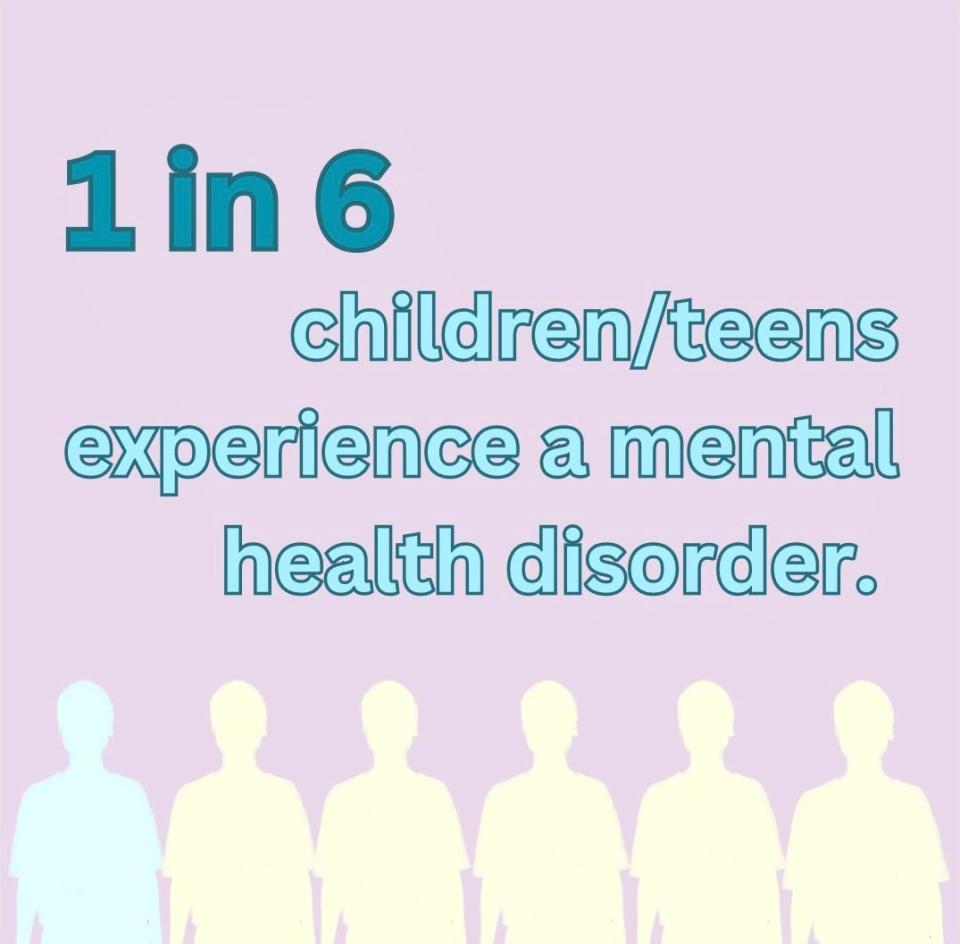Mental health resources in schools – improvement on the rise?
Editor's Note: The following is part of a class project originally initiated in the classroom of Ball State University professor Adam Kuban in fall 2021. Kuban continued the project the 2023 spring semester, challenging his students to find sustainability efforts in the Muncie area and pitch their ideas to Deanna Watson, editor of The Star Press, Journal & Courier and Pal-Item. This spring, stories related to health care will be featured.
Children’s mental health issues need to be heard.
“Adults (involved) in kids' lives being open to talking to them, checking in on them and paying attention to the small things is really important,” said Hannah Rapp, a senior at Indiana University who hopes to have a career involving children's mental health.
Adequate mental healthcare is a vital factor in a healthy society, and that starts from childhood. In Indiana’s schools, the available mental health resources for children vary. Young and rising professionals see issues in the current resources available and are motivated to make some changes.

Rapp is studying Human Development and Family Studies to eventually become a school counselor.
“I think it was really important to me to be the adult that I didn’t really have for these kids,” Rapp said on why she decided to go into this field.
There are a few different categories of employees within mental healthcare in schools.
Emma Orr is a young professional who works in a school near Indianapolis. She works for an outside mental health agency that is implemented in the school.
“I work with kids that have ADHD, trauma, depression and different mental health disorders and give them training and coaching and skills to help navigate school and life better,” Orr said. “I like (working with) kids — I think they’re funny; they're fun to be around. Anything that they're going through is just as valid as something an adult would go through.”
Orr believes that there are changes that need to be made regarding mental health resources available to students.
“Some schools will have one counselor for the entire system, or they’ll have one school psychiatrist,” Orr said. “I think a lot of admins know that (the lack of resources) is an issue. A lot of times (people in charge) are just trying to put a band-aid on behaviors.”
Orr does, however, believe that most schools are doing the best they can with what they have.
“I think everyone that works in school districts works hard, but it’s expensive,” she said.
Rapp feels this way as well. She believes that a large amount of the variation in schools’ current resources occurs due to inequalities in the funding of schools, which shows up heavily in their mental health resources.
“In the area I’m from, school counselors tend to be more of, ‘OK, let’s figure out what you’re doing for your career,’ and nothing more than that,” Rapp said. “I think that they could take up a more prominent role. (The government) needs to put more money into those areas — I think they’d see a meaningful difference if they added more support systems.”

The National Alliance on Mental Illness states that one in six US youth aged 6-17 experience a mental health disorder each year, but only half receive mental health services, which can end up costing money due to issues arising from untreated mental illnesses. A way to combat these costs could be to attack the problem at one of its roots — put more money into the schools that need it and where they need it: mental health.
Orr also believes that there is underfunding specifically for schools’ mental health resources and that the resources schools do receive are not always allocated in the best way.
“I know that school corporations can’t necessarily direct exactly how all of the money gets sent and put into different things,” Orr said. “They have budgets that they have to follow; they have donors that donate toward certain things; they have the state government that decides what’s more important, so I think a lot of it is government funding.”
Mental health issues show up in public schools, but many schools do not do screenings to become aware of this. According to a study done in 2020 published in “Psychology in the Schools” by K.C. Herman, at most, only about 20% of schools currently engage in mental health screenings.
Rapp said she believes there are ways to combat this issue.
The lack of funding and payment for counselors and teachers can hinder passion and motivation. As an emerging young professional, Rapp has plans to try and make as much of a change in her field as she can.
“What I really want to maintain is an open-door policy,” Rapp said. “If (students) need to come to me in the middle of class because something is just not right and they need to talk, I want that to be something they can do freely. Obviously, there are going to be different district rules, but I would like to advocate for that more in whichever school district that I end up in.”
Orr also plans to try her best to make a change.
“It’s gotten better; it has changed a lot with people talking about it and mental health being more of a conversation… people actually believing that mental illness is a thing and is important to treat. That’s caused a lot of change,” Orr said. “As long as the conversation is still there and being brought up, I think we’ll get there.”
Schools have room for improvement in mental healthcare that could significantly improve the lives of students. Government funding on top of passionate workers may be the answer, and young professionals may have the fire and fight to help bring about this change.
This article originally appeared on Muncie Star Press: Mental health resources in schools – improvement on the rise?

